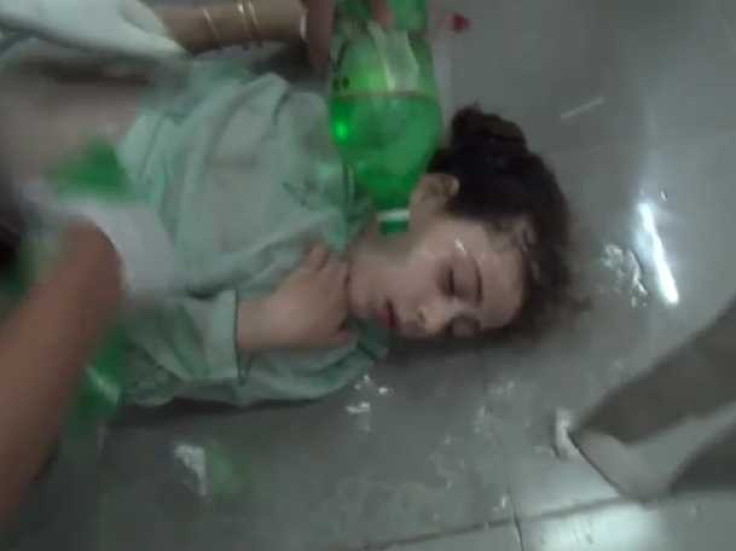Syria: Western Chemical Weapons Experts Cast Doubt on Obama Nerve Gas Claims

Western experts in the use of chemical weapons have cast doubt on US government claims that weapons-grade nerve gas was used against civilians in the suburbs of Damascus on Wednesday.
The regime of Bashar al-Assad agreed on Sunday to allow UN weapons inspectors access to the sites, in the suburbs of neighbourhoods of Ain Tarma, Zamalka and Jobar in the Syrian capital.
The regime had until today denied the inspectors access to the sites.
However, the US administration said the decision had come "too late to be credible", particularly as regime forces had shelled the affected area repeatedly in the days after the attack, meaning any evidence would be further degraded.
The charity Medecins Sans Frontieres said 3,600 people were admitted to hospitals where it had a presence, all suffering "neurotoxic symptoms". A total of 355 died people in the attacks.
Dan Kaszeta, a former officer in the US Army's Chemical Corps, said tell-tale signs of a chemical weapons attack were conspicuously absent from footage shot in the aftermath of the attack.
He said medics treating the victims would have been expected to suffer serious health problems after coming into direct and prolonged contact with the victims, in the absence of protective clothing.
"None of the people treating the casualties or photographing them are wearing any sort of chemical-warfare protective gear," said Kaszeta.
"Despite that, none of them seem to be harmed."
He said the lack of any adverse effects in doctors treating the victims would rule out the use of most military-grade chemical weapons.
The vast majority of nerve gases, such as the Sarin gas stockpiled in large quantities by the Syrian regime, do not evaporate immediately, but leave residual contamination on clothes and skin. That level of contamination would cause severe harm to those coming in contact with victims in the hours after the attack, particularly when used at sufficient strength to kill hundreds of people.
Kaszeta added: "There are none of the other signs you would expect to see in the aftermath of a chemical attack, such as intermediate levels of casualties, severe visual problems, vomiting and loss of bowel control."
Steve Johnson, an expert in hazardous material exposure at England's Cranfield University, agreed.
Johnson, who has worked with Britain's Ministry of Defence on chemical warfare issues, said it was a surprising that the contamination was not more widespread.
"From the details we have seen so far, a large number of casualties over a wide area would mean quite a pervasive dispersal," he said.
"With that level of chemical agent, you would expect to see a lot of contamination on the casualties coming in, and it would affect those treating them who are not properly protected. We are not seeing that here."
Other weapons?
Instead, experts began examining the possibility that other weapons could have caused the horrific casualties.
Gwyn Winfield, editor of the industry journal CBRNe World, which deals with chemical, biological and nuclear warfare, said the Syrian army may have used large concentrations of tear gas against people confined in unventilated areas.
In large concentrations, these substances can cause suffocation, especially in closed spaces, such as in bunkers where families took shelter from the bombing.
"One alternative is that a large concentration of riot control agents were used here, which could have caused suffocation of large numbers of people who were pressed together in a bunker or underground shelter," he said.
The principal evidence for allegations that chemical weapons were used lay in the lack of visible wounds on the bodies of the victims, leading some to conclude the cause of death was respiratory trauma or asphyxiation.
Many of the casualties showed signs of convulsions and, in at least one case, contracted pupils, which are both symptoms of nerve gas exposure.
Another possible cause for the large-scale casualties, and the absence of external injuries on the victims, lay in the regime's use of fuel-air bombs, which create a fireball that sucks the air out of confined spaces, causing those inside to asphyxiate.
The Syrian army has used fuel-air bombs extensively since the conflict broke out.
© Copyright IBTimes 2024. All rights reserved.





